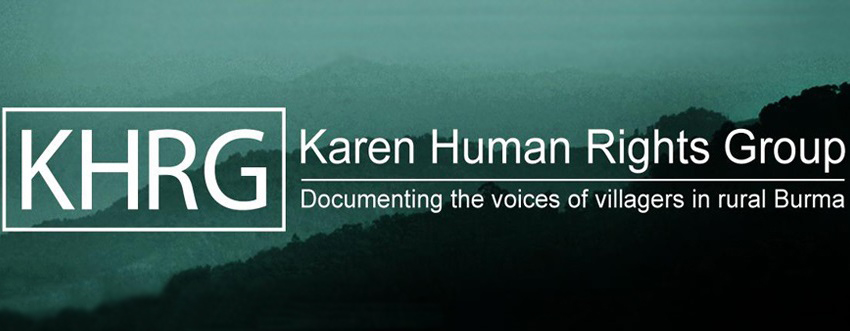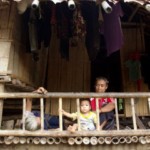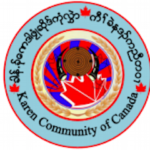Karen Human Rights Group (KHRG) | September 21, 2017
This News Bulletin describes the details of a non-violent protest held by Internally Displaced People (IDPs) that urged the Tatmadaw to withdraw their army camps in Lu Thaw Township, Hpapun District in 2017 so that villagers and IDPs can work freely and peacefully for their livelihood without fear of landmines or Tatmadaw abuses. The protest was held on May 15th 2017 at A— place, Pla Hkoh village tract. 615 IDPs participated in this protest. After the protest, the Tatmadaw reinforced their troops and increased their amount of military activity.
Introduction and the history of IDPs in Lu Thaw Township
Thousands of Karen Internal Displaced Peoples (IDPs) were displaced from Lu Thaw Township, Hpapun District during Tatmadaw offensives spanning from 1975 to 2008. During the military offensives, many of the villagers who were living in Lu Thaw Township fled their original villages and lived in make-shift, temporary housing in the jungle and mountainous areas in Lu Thaw Township and other areas in Hpapun District. Most villagers displaced to Naw Yoh Hta, Kaw Loh Der, Yeh Muh Plaw and other village tracts [2] in Lu Thaw Township but some villagers also displaced to refugee camps in Thailand. These IDPs and refugees fled due to heavy attacks on their original villages as well as in an effort to evade being forced to porter for the Tatmadaw and other forms of human rights abuses.
KHRG has consistently reported on the inability of IDPs in Lu Thaw Township to return to their original villages, even after the 2012 preliminary ceasefire agreement was signed. [3]According to updated information received on July 31st 2017, there are currently 31,259 IDPs in Lu Thaw Township such as Saw[4] E—, 69 years old. Saw E— testified, “I was displaced from F— village on October 10th 1975 because of Myanmar government military [Tatmadaw] attacks. I have not been able to return to my village since that time. I have to stay in other peoples’ villages every year. Even after the 2012 preliminary ceasefire and Nationwide Ceasefire Agreement [5] were signed we do not feel that it would be safe to return home.”
Read the full report (PDF) here.
[1] This News Bulletin was written by KHRG office staff and is based on information from a community member from Hpapun District who has been trained by KHRG to monitor local human rights conditions. It summarises information from two incident reports and one situation update received by KHRG in June 2017. In order to increase the transparency of KHRG methodology and more directly communicate the experiences and perspectives of villagers in southeast Burma/Myanmar, KHRG aims to make all field information received available on the KHRG website once it has been processed and translated, subject only to security considerations. For additional reports categorised by Type, Issue, Location and Year, please see the Related Readings component following each report on KHRG‟s website.
[2] A village tract is an administrative unit of between five and 20 villages in a local area, often centred on a large village.
[3] For additional KHRG reporting on IDPs in Lu Thaw Township see, “Ongoing militarisation prevents Lu Thaw Township IDPs from returning home,” KHRG, February 2014 and, “IDPs, land confiscation and forced recruitment in Papun District,” KHRG, July, 2009. On January 12th 2012, a preliminary ceasefire agreement was signed between the KNU and Burma/Myanmar government in Hpa-an. Negotiations for a longer-term peace plan are still under way. For updates on the peace process, see the KNU Stakeholder webpage on the Myanmar Peace Monitor website. For KHRG’s analysis of changes in human rights conditions since the ceasefire, see Truce or Transition? Trends in human rights abuse and local response since the 2012 ceasefire, KHRG, May 2014. In March 2015, the seventh round of the negotiations for a national ceasefire between the Burma/Myanmar government and various ethnic armed actors began in Yangon, see “Seventh Round of Nationwide Ceasefire Negotiations,” Karen National Union Headquarters, March 18th 2015. Following the negotiations, the KNU held a central standing committee emergency, see “KNU: Emergency Meeting Called To Discuss Nationwide Ceasefire Agreement And Ethnic Leaders‟ Summit,” Karen News, April 22nd 2015.
[4] Saw is a S‟gaw Karen male honorific title used before a person‟s name.
[5] On October 15th 2015, after a negotiation process marred with controversy over the notable non-inclusion of several ethnic armed groups and on-going conflicts in ethnic regions, a Nationwide Ceasefire Agreement (NCA) was signed between the Burma/Myanmar government and eight of the fifteen ethnic armed groups originally invited to the negotiation table, including the KNU, see “Myanmar signs ceasefire with eight armed groups,” Reuters, October 15th 2015. Despite the signing of the NCA prompting a positive response from the international community, see “Myanmar: UN chief welcomes „milestone‟ signing of ceasefire agreement,” UN News Centre, October 15th 2015, KNU Chairman General Saw Mutu Say Poe‟s decision to sign has been met with strong opposition from other members of the Karen armed resistance and civil society groups alike, who believe the decision to be undemocratic and the NCA itself to be a superficial agreement that risks undermining a genuine peace process, see “Without Real Political Roadmap, Nationwide Ceasefire Agreement Leads Nowhere…,” Karen News, September 1st 2015. The signing of the NCA followed the January 12th 2012 preliminary ceasefire agreement between the KNU and Burma/Myanmar government in Hpa-an. For KHRG’s analysis of changes in human rights conditions since the preliminary ceasefire, see Truce or Transition? Trends in human rights abuse and local response since the 2012 ceasefire, KHRG, May 2014.
This report was originally published by Karen Human Rights Group on September 21, 2017.



![‘The Burma Army Killed Him [Saw O Moo] – At Least the Government or the Army Should Commit to Not Do This Again’: Paul Sein Twa, Executive Director of KESAN](https://www.burmalink.org/wp-content/uploads/2018/05/Saw-O-Moo-commemoration-Paul-Sein-Twa-speaking-2-150x150.jpg)



